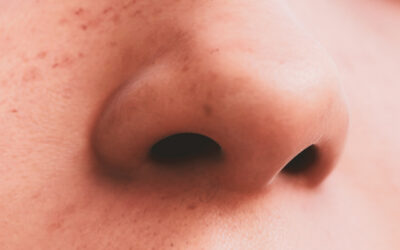Many people believe that facial harmony depends only on bone structure or skin quality. However, this is not the case. Facial volumes and proportions play a major role in balance and attractiveness. There is another important aspect: these traits also influence how we perceive gender expression in a face.
One of the surgical procedures that helps refine the face, adjust volumes, and modify angles is buccal fat removal (bichectomy), which can therefore be part of the facial feminization process for those trans women who consider it necessary. Keep reading to learn what buccal fat removal is and how it may help you achieve the results you are looking for.
What is buccal fat removal?
Buccal fat removal is a minimally invasive surgical procedure that consists of partially removing the buccal fat pads (Bichat’s fat pads), which are fat compartments located inside the cheeks, between the chewing muscles.
These pads play a role during infancy, aiding suction in babies. In adulthood, however, they serve no essential function, and their size can influence facial appearance. When prominent, they add volume to the mid and lower face, creating a rounder or heavier look.
The purpose of buccal fat removal surgery is to reduce this volume, refine facial contours, highlight the cheekbones, and create a more slender, angular, and therefore more feminine appearance.
What does buccal fat removal offer trans women?
For trans women, removing the buccal fat pads may provide several benefits:
-
- Enhancing the midface definition, highlighting the cheekbones
- Reducing cheek volume when it is overly prominent
- Improving facial definition, especially in combination with other treatments
- Softening a “masculine” facial reading when excess cheek fat conceals the bone structure
However, this procedure is not indicated in all cases. When the buccal fat pads are small, or when the face already has a sufficiently feminine appearance, surgery may not be recommended. This is why an individualized assessment by a specialized facial feminization team is essential, to analyze the entire face and determine – together with the trans woman – whether this intervention is truly necessary and beneficial in her case.

How is buccal fat removal surgery performed?
Buccal fat removal is usually performed under local anesthesia with sedation. The surgeon accesses the buccal fat pads through a small incision inside the mouth, leaving no visible scars. The procedure typically lasts between 30 and 45 minutes, and recovery is fast with minimal discomfort.
In the first few days, swelling, tenderness, and slight chewing limitations may appear. A soft diet, strict oral hygiene, and avoiding physical exertion are recommended. Patience is important, as initial swelling can mask the final results, which become noticeable after 3–4 weeks and stabilize between the third and sixth month.
Results of buccal fat removal
It is important to note that buccal fat removal does not change bone structure, nor does it feminize the face on its own. Its effect is more evident in patients with full cheeks, and more subtle in those with average or already slim facial volume.
The main benefit of this procedure is its ability to complement other facial feminization surgeries, such as jaw contouring, feminizing rhinoplasty, or facelift procedures.
Patients should not expect a radical transformation of the face through buccal fat removal alone. This surgery should not be considered the sole strategy for achieving facial feminization. Additionally, it is not recommended for patients with very thin faces, as natural fat loss over time may accentuate a hollowed or aged appearance.

Buccal fat removal or fillers?
It is important to understand that these are two different concepts. While aesthetic medicine sometimes aims to refine the face through strategic volume reduction, fillers usually add volume to sculpt key areas – such as the cheekbones, chin, or jawline, often using hyaluronic acid.
Before deciding on buccal fat removal, it is essential to understand your facial needs and which technique can help you achieve a more harmonious and coherent feminization. A precise diagnosis should evaluate:
-
- Skin thickness and facial fat distribution
- Balance between the three facial thirds
- Medical history and hormonal treatment (if applicable)
- The trans woman’s wishes, expectations, and transition process
There is no single valid strategy for facial feminization. What matters is building a personalized, safe, and realistic plan.
Risks and contraindications of buccal fat removal
Buccal fat removal is safe when performed by experienced surgeons. However, as with any procedure, risks exist: bleeding, hematoma, infection, or, in rare cases, injury to the facial nerve. This is why it should not be trivialized or treated as a “minor cosmetic surgery” without proper planning and follow-up.
It is also contraindicated in patients with very thin faces, active eating disorders, or untreated body dysmorphia. Mental and emotional health must also be considered before recommending any facial procedure.
Facial feminization: A comprehensive approach
Facial feminization is a set of procedures and surgical interventions that aim to adapt facial traits toward what is aesthetically perceived as feminine. Whether or not buccal fat removal forms part of this process should always be a joint decision between the medical team and the trans woman.
Above all, it should be part of a global and personalized approach, performed by specialized medical professionals with extensive experience in this type of surgery.
If you would like more information about buccal fat removal,
contact our team at IM GENDER and we will be happy to answer your questions.






